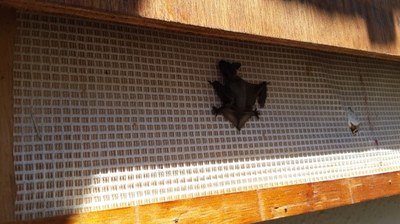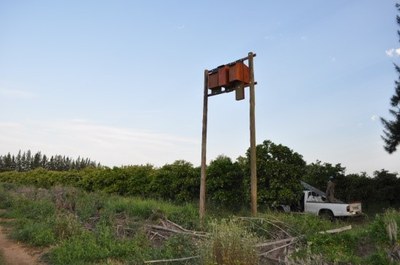I often overhear people in the office speaking on the phone to our clients about the wonders of bats and how many mosquitoes they eat per night. It seems to range from “1000 mosquitoes in the first hour after dark”, to “1000 per night” to “10 000 per night” to “a lot; heaps!”. I even once, though only once, heard someone proudly say... “All of them!”. I started thinking about how one would work it out.
So, if you have been having the same sleepless nights wondering exactly this, grab a cup of tea, coffee, double, and let’s go...
For the sake of a simple answer, let’s use the Cape Serotine Bat (Neoromicia capensis) as the predator and the mosquito (Culex pipiens) as the prey item (both species are common visitors to gardens in Cape Town and Johannesburg). Again, for simplicity sake, let’s suggest a catholic mosquito diet for the duration of the dusk to dawn equation. Please remember that this is a broad scientific stroke equation, so a degree of latitude would be most welcome.

The number of insects consumed by a bat varies considerably by species, season and reproductive cycle. It is estimated that a Little Brown Bat in captivity consumes roughly 25% of its body weight in insects each night (1). Obviously under natural conditions, this intake would increase as large energy requirements are required in the actual predation process. Kurta et al (2) estimates that at a peak night of lactation, a 7,9g Little Brown Bat (M. Lucifugus) needs to consume 9.9g of insects (over 100% of its body mass). This increase in consumption is a result of the costly energetic expenditures required during the reproductive cycle (I’m sure most of us can relate?). At peak lactation, a female Brazilian Free-tailed Bat (Tadarida brasiliensis) can consume up to 70% of her body mass in insects each night (3).
Like the Little Brown Bat the Cape Serotine Bat weighs between 6 - 10g. On average, our household mosquito weighs 2.5mg. There are 1000 milligrams to a gram (just a reminder). If we have an 8g bat exclusively eating 2.5mg mosquitoes nightly and requiring a conservative 65% of its body weight to sustain it, we come up with a mosquito consumption of 2080 mosquitoes per night. Simultaneously, this also disproves the “bat flying into your hair” theory. Requiring a nightly quota of 2000 mosquitoes, it’s not that they don’t want to fly into your hair, it’s just that they really don’t have the time.
Potentially, a Cape Serotine Bat can consume approximately 2000 mosquitoes per night. Cape Serotine Bats roost in families of between 15 - 20 individuals. That is a theoretical mosquito consumption of roughly 30 000 - 40 000 mosquitoes each night. That is a lot of mosquitoes!

Many insectivorous bats hibernate during the winter months and re-appear in spring when insect numbers increase. Bats normally roost in caves and tree cavities, or behind the bark of dead trees. It is believed that a lack of roosting sites are a limiting factor within both urban and agricultural landscapes, and it is for this reason that EcoSolutions currently manages and monitors over 200 bat hotels on citrus farms in the Western and Eastern Cape, and almost 100 bat hotels on macadamia farms in the Limpopo Province. These projects are part of a Masters dissertation on the efficacy of bats in controlling the False Codling Moth, an agricultural pest in South Africa that has been estimated to cost SA fruit growers between R300 - R500 million annually.
Another fascinating thing about the Cape Serotine Bat is that, along with the Yellow House Bat, they will readily utilise bat houses and are actually our most common bat box occupant.
Bats are a wonderful and vital environmental asset and should be catered for in every environmentally friendly home.
References
1. Coutts, R.A., M.B. Fenton and E. Glen. 1973. Food intake by captive Myotis lucifugus and Eptesicus fuscus (Chiroptera: Vespertilionidae). J. Mammal. 54: 985–990.
2. Kurta, A., G. Bell, K. Nagy & T. Kunz. 1989. Energetics of pregnancy and lactation in free-ranging little brown bats (Myotis lucifugus). Physiol. Zool. 62: 804–818.
3. Thomas H. Kunz,1 Elizabeth Braun de Torrez,1 Dana Bauer,2 Tatyana Lobova,3 and Theodore H. Fleming4 Ecosystem services provided by bats. ANNALS OF THE NEW YORK ACADEMY OF SCIENCES Issue: The Year in Ecology and Conservation Biology